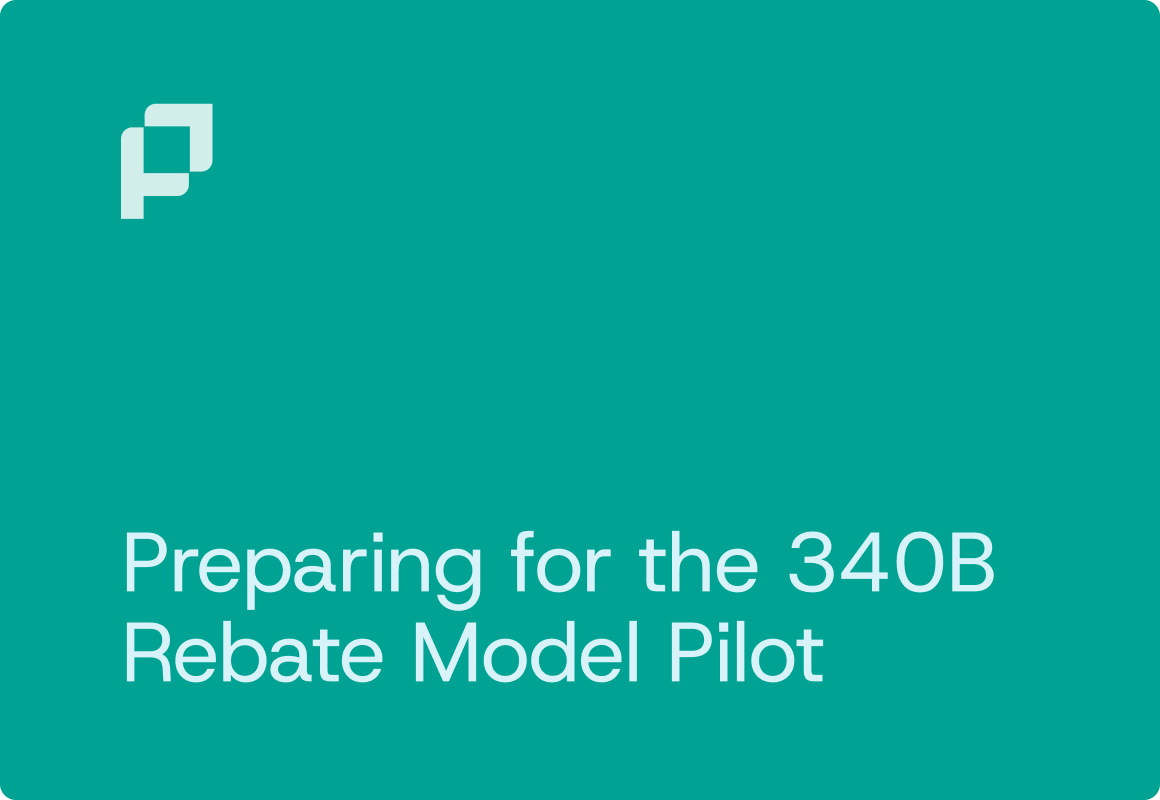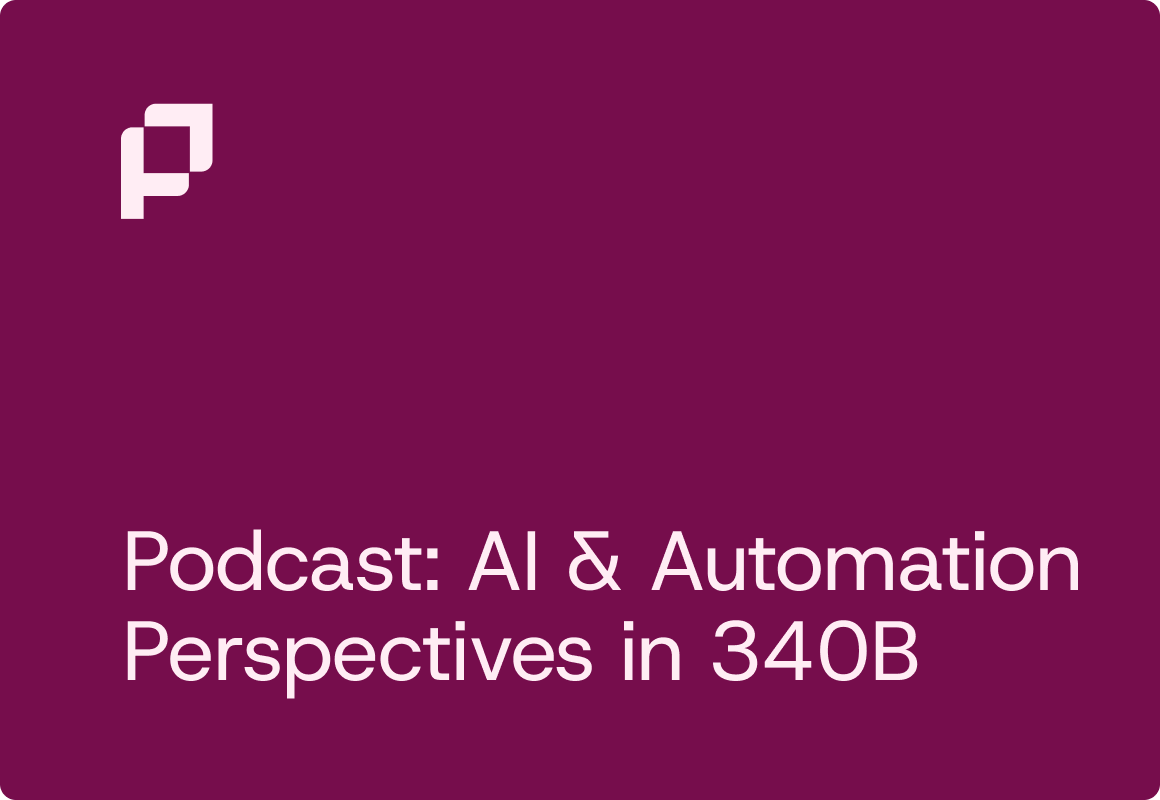HRSA Approves 340B Rebate Pilot for 10 Drugs: What Covered Entities Need to Prepare

By Tim L'Hommedieu, SVP of Pharmacy at Plenful. Connect with Tim on LinkedIn.
On October 30th, HRSA approved a 340B Rebate Pilot program for 10 drugs, a sweeping regulatory shift that will reshape how Covered Entities approach 340B beginning January 1, 2026.
If you’re a Covered Entity reading this blog post, you’re probably asking: What does HRSA’s newly approved 340B Rebate Model Pilot mean for us, and how can we prepare given the short timeline?
→ Eager to explore Plenful’s solution for easing the rebate transition? Request a demo to see our 340B Rebate Management Solution first-hand.
340B Rebate Model in a Nutshell: A Major Change on a Tight Timeline
HRSA’s pilot program, first unveiled this summer, changes how Covered Entities purchase 10 of the selected Maximum Fair Price (MFP) drugs. Instead of accessing the 340B discounted price at acquisition, participating entities will purchase eligible drugs at WAC, then submit claims for manufacturer rebates post-purchase.
Under the final structure:
- Eight manufacturer plans for participation, inclusive of 10 drugs (Eliquis, Enbrel, Farxiga, Fiasp, Imbruvica, Januvia, Jardiance, Novolog, Stelara, and Xarelto).
- All rebate submissions will operate through Beacon Channel Management, the technology platform owned by Second Sight Solutions (the same parent company behind 340B ESP).
- HRSA’s final approval expanded the data fields to include medical claims data requirements, meaning Covered Entities will need to submit these elements in order to effectuate rebates.
The model aims to improve transparency and prevent duplicate discounts. It also facilitates coordination between the 340B program and the Inflation Reduction Act’s Maximum Fair Price (MFP) program. The rebate structure provides manufacturers with essential claims data to effectuate if a claim should receive an MFP refund or 340B rebate. Despite the potential benefits, this introduces considerable new operational and financial challenges for covered entities.
For some organizations, this rebate model could create a major financial gap, as Covered Entities are required to “float” the cash to cover the incremental acquisition cost of the drugs until reimbursement is received from the manufacturer.
What This Means for 340B Operations and Financial Planning
In the new model, Covered Entities will pay a higher upfront price and then seek reimbursement through the rebate process — with manufacturers expected to remit payments within 10 days of claim submission.
That may sound straightforward, but in reality, it introduces three major operational challenges:
1. Cash Flow Pressure
Health systems will need to “float” the higher drug acquisition costs until rebates are received, which can significantly strain budgets and forecasting.
2. Increased Data Submission Complexity
Covered Entities must accurately organize and submit a variety of manufacturer-required data elements for each claim. Any missing or incorrect data will lead to delays or denials — adding administrative overhead and potential compliance risk.
3. Reconciliation & Oversight Challenges
With claims flowing through Beacon Channel Management and multiple data endpoints involved, maintaining visibility into outstanding rebates and payment timelines will be difficult without automation.
For large health systems, this creates new coordination challenges across 340B, finance, and IT teams. For smaller organizations, the administrative lift may be prohibitive — leading some to consider excluding these drugs from their programs altogether.
How Plenful’s Rebate Management Solution Helps Teams Prepare
As soon as the pilot was announced back in July, we began collaborating with Covered Entity partners to build a 340B Rebate Management Solution designed to ease this transition and automate the heavy lift.
Here’s how Plenful will help Covered Entities stay compliant and financially confident under the new rebate model:
Automated Data Submission
Plenful automatically organizes and submits all required data elements to manufacturers — ensuring accuracy and compliance.
Modeled after our 340B Export Package for ESP and state reporting, this automation reduces manual work by over 95% and minimizes the risk of costly submission errors.
Fast, Accurate Reconciliation and Rebate Validation
Built on the same logic as our Claim Capture and Rate Reconciliation use case, Plenful validates rebate amounts, flags delays, and ensures timely manufacturer reimbursement within the 10-day window.
Clear Financial Visibility
Gain real-time oversight of rebate activity with dashboards that showcase key financial metrics — including estimated cash float, claims submitted and outstanding, NDC roll-ups, and monthly summaries — all configurable to your organization’s needs.
Looking Ahead
This HRSA approval signals a new era for 340B operations, one that demands greater data precision, audit readiness, and cash flow management.
At Plenful, we’re helping Covered Entities move quickly and confidently into that future by turning complex rebate workflows into automated, transparent, and measurable processes.
We’ll continue working closely with our customer community to align with HRSA’s evolving guidance and ensure you’re ready when the pilot goes live in January 2026.
How Can Plenful Support You?
If your organization is planning for the 340B Rebate Pilot, now is the time to evaluate your data readiness and automation strategy.
📅 Request a personalized demo of our Rebate Management Solution to see how we can help your team reduce manual work, maintain compliance, and safeguard margin.
Related blogs

Pharmacy on the Frontlines: Takeaways from Becker’s Chief Pharmacy Officer Panel

Plenful Named to TechCrunch's AI Disruptors 60 List

4x Capacity, 75% Less Manual Work: How We’re Bringing AI-powered Speed to Intake Authorization, End-to-End


